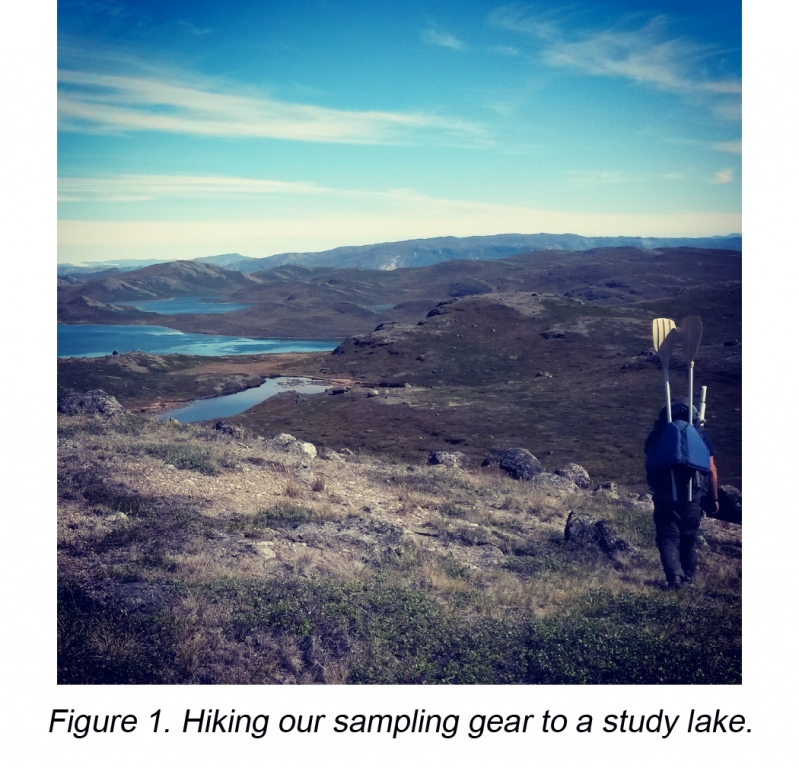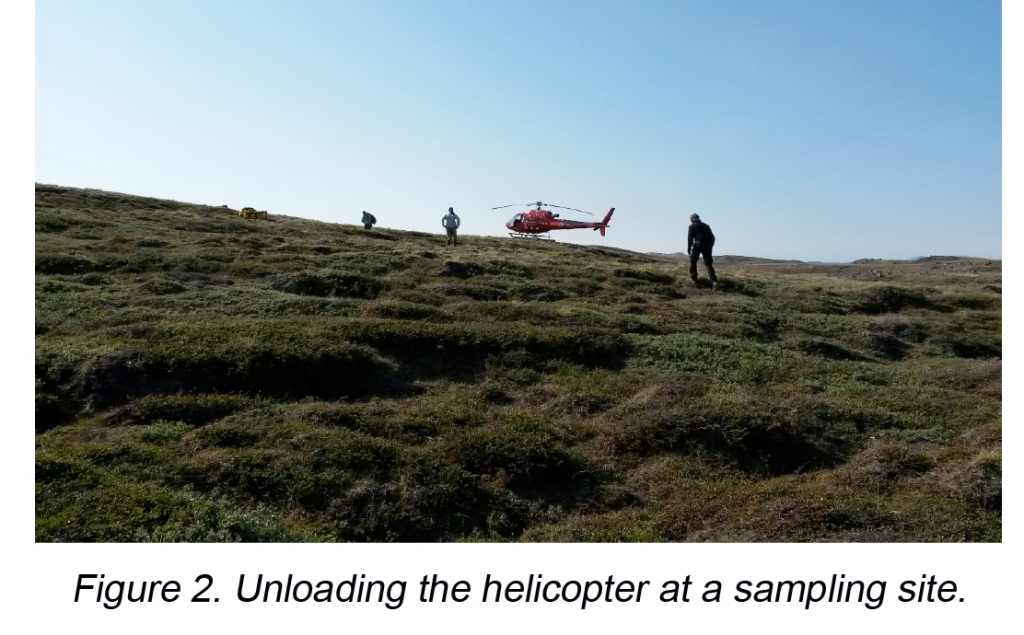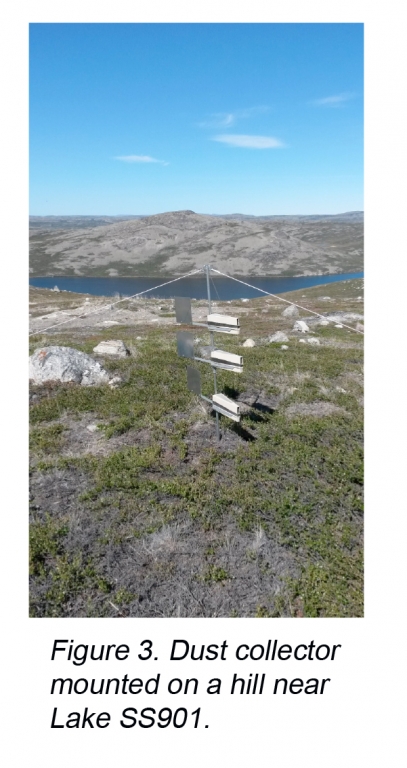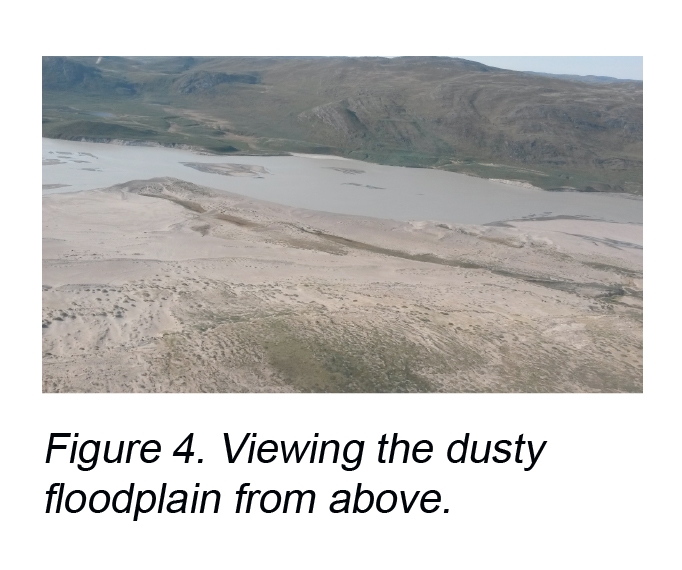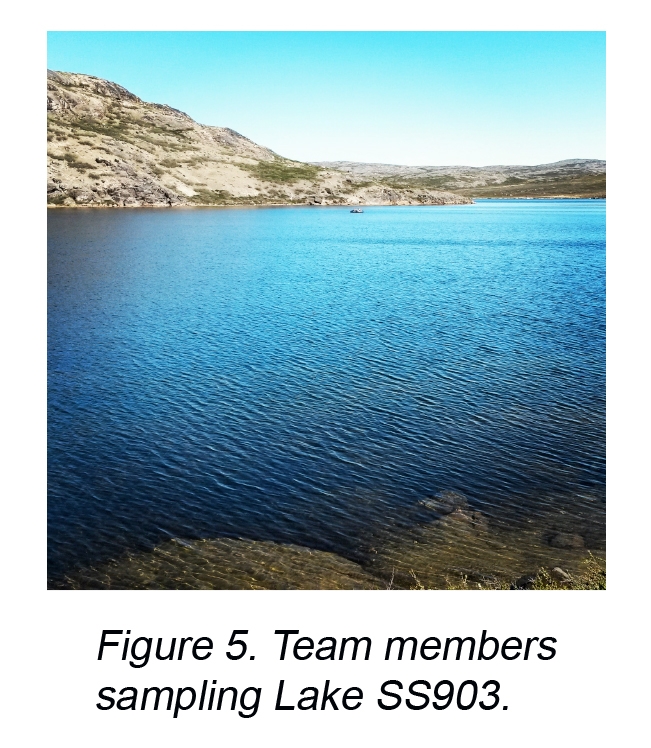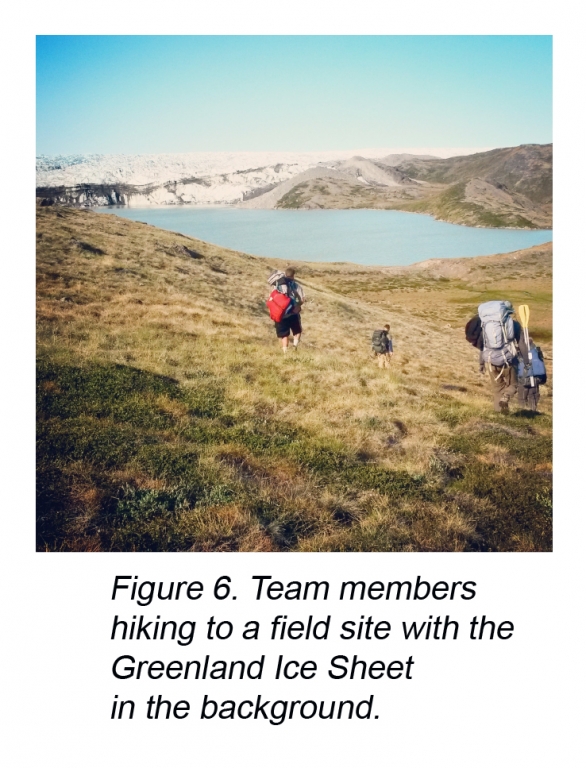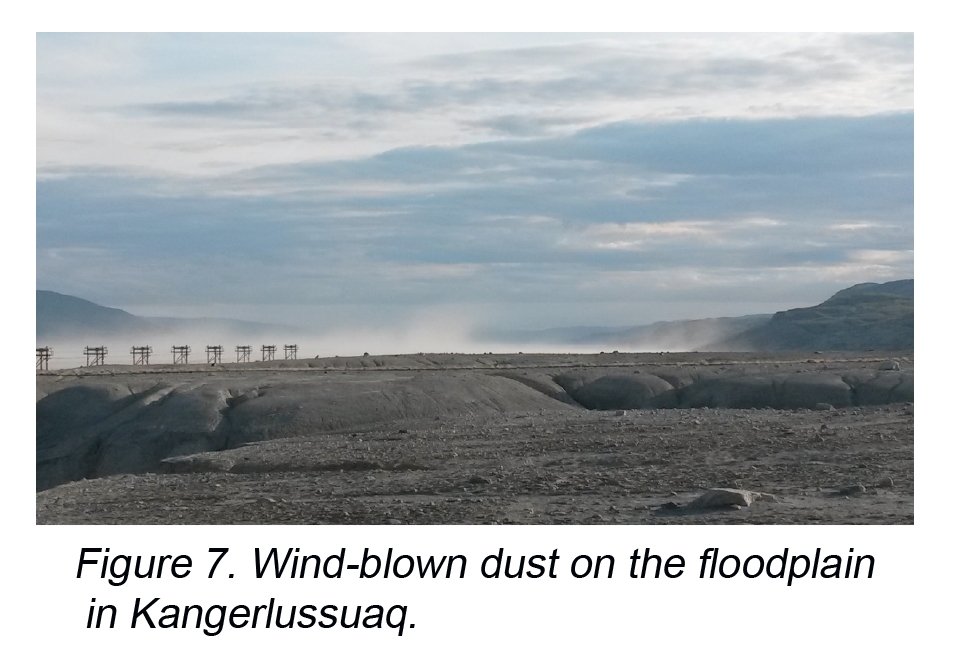How do elevated dust inputs affects carbon cycling in Arctic Lakes?
How do elevated dust inputs affects carbon cycling in Arctic Lakes?
Kangerlussuaq, Greenland
June 25 – July 16, 2015
Field team members: Rachel Dicker, Jasmine Saros, Ben Burpee, Robert Northington, Kristin Strock, Helen Schlimm, Max Egener
Funding Support: This research was supported by the US National Science Foundation Adaptation to Abrupt Climate Change IGERT program grant DGE-1144423
In recent years, air temperatures in Greenland have increased by almost 3°C (Mayewski et al. 2014), resulting in more frequent glacial outburst flooding from the Greenland Ice Sheet. During flooding events, glacial flour (very fine particles generated by grinding of the ice sheet over bedrock) is distributed on river floodplains. After the water recedes, glacial flour is easily picked up by wind and blown across the landscape as dust.
During the same period that glacial outburst floods were increasing, dissolved organic carbon (DOC) in lakes across the region decreased (Saros et al. 2015). DOC is made up of decomposed plant or animal matter from the landscape, and can be produced by macrophytes or algae within lakes. DOC is important for lake structure and function because it can regulate heat and light availability within lakes and also acts as a food source to aquatic microbes.
We wanted to learn how the increased dustiness across the landscape might be impacting DOC in lakes across the Kangerlussuaq region, so we designed dust addition experiments to test how DOC quantity and quality from different lakes responded to dust collected from the floodplain. This research will help us more completely understand how abrupt climate change influences landscape-scale events that can alter carbon cycling in Arctic lakes.
References:
Mayewski, P.A. et al. 2014. Holocene warming marked by abrupt onset of longer summers and reduced storm frequency around Greenland. J. Quat. Sci., 29: 99–104.
Saros, J.E. et al. 2015. Recent decrease in DOC concentrations in Arctic lakes of southwest Greenland. Geophys. Res. Lett., 42: 6703–6709.


